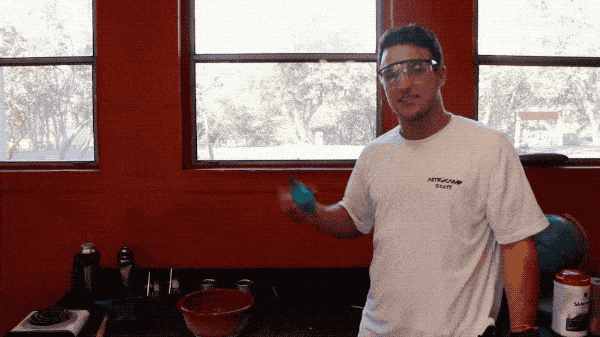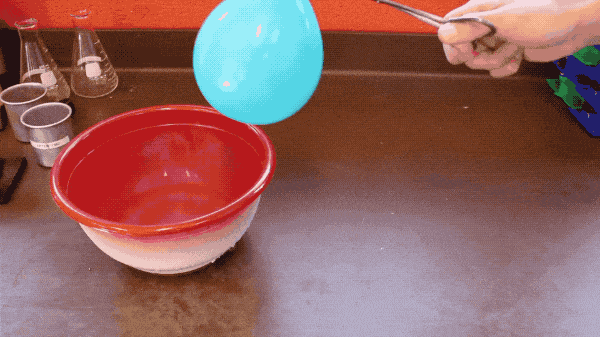
CAUTION: This experiment uses dry ice (-109˚F) and liquid nitrogen (-321˚F). Proper safety equipment should always be used when handling these substances.
Physics tells us that pressure, volume and temperature are all linked when talking about gases. So what does this have to do with solid carbon dioxide (dry ice) and liquid nitrogen? When dry ice is placed into a balloon at room temperature, which is then tied off, it will start to warm up.

Since the ambient air temperature is roughly 65˚F, the air that surrounds the balloon is more than 150 degrees warmer than the dry ice! This hug difference adds energy to the dry ice turning it into gaseous carbon dioxide through the process of sublimation. Sublimation is the phase transition of a substance directly from the solid to the gas phase without passing through the intermediate liquid phase.

Now that there is a balloon full of carbon dioxide gas we can cool it down with something colder than dry ice. This is where liquid nitrogen comes in. The balloon gets dunked into a bowl full of the -321˚F liquid! Cooling the gas in the balloon down means that it loses energy making the molecules start to clump, making the balloon lose volume. It will turn the carbon dioxide gas back into a solid through the process of deposition. Deposition is basically the opposite of sublimation, turning the gas directly into a solid.

This process of cooling and warming to change the balloon’s volume can be repeated over and over again. Or, with the inflated balloon, dunk it in the bowl of liquid nitrogen, take it out, and before it can expand again, rip it open to see the solid carbon dioxide for yourself!
Written By: Mimi Garai
